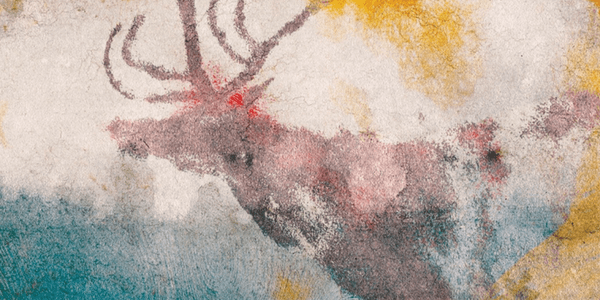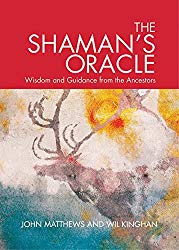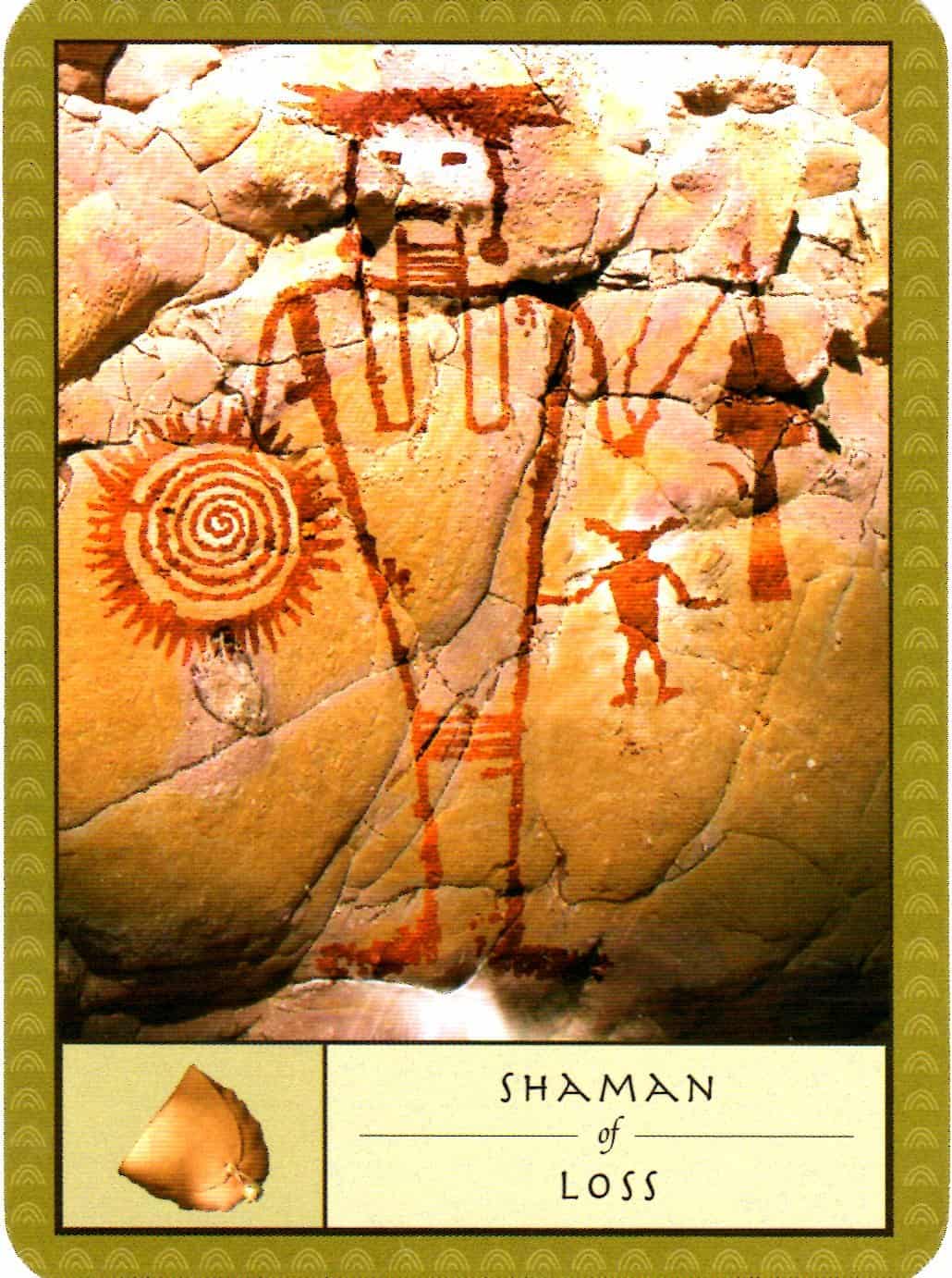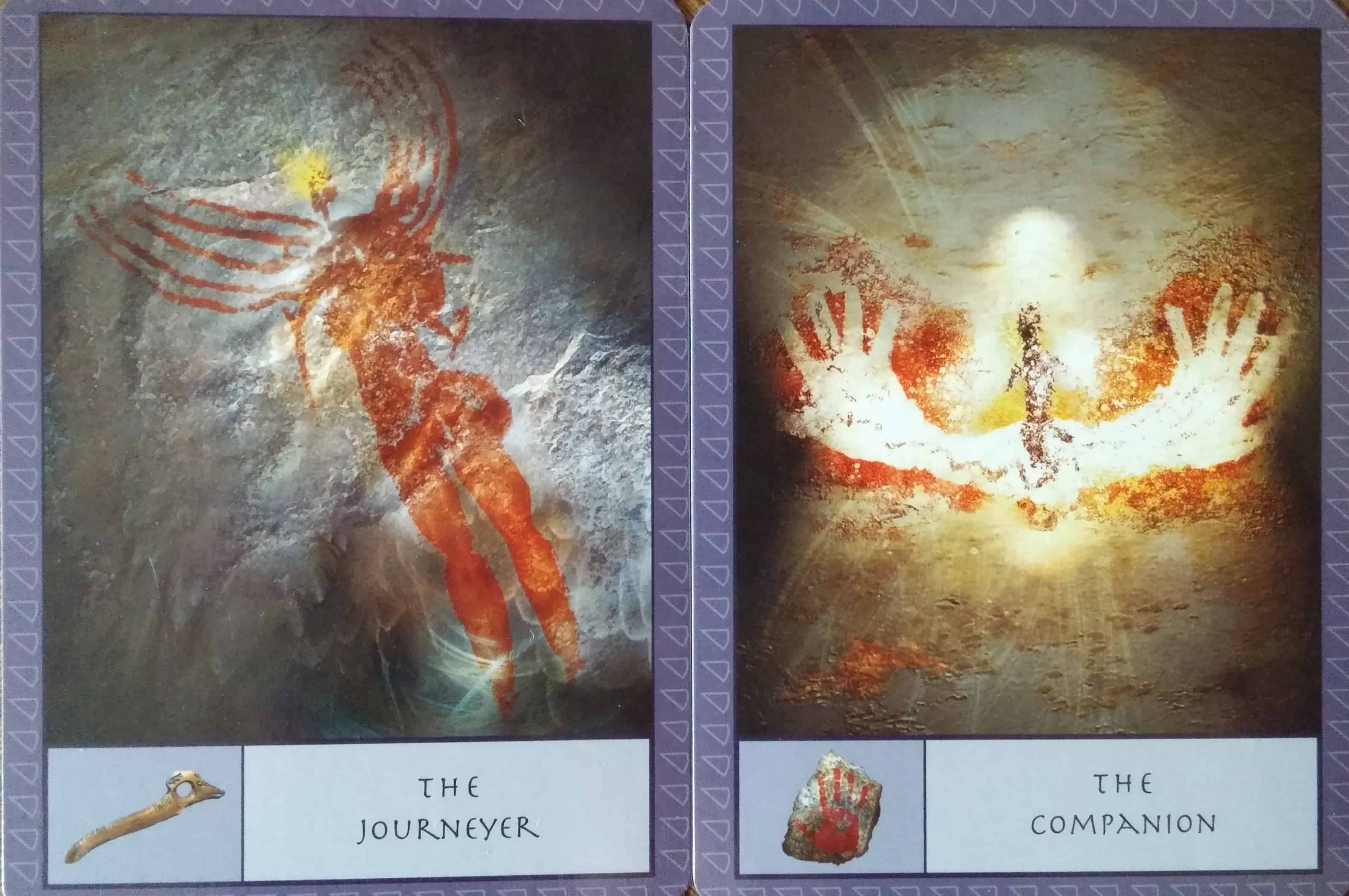

The Shaman’s Oracle: Wisdom and Guidance from the Ancestors, by John Matthews and Wil Kinghan
Watkins Publishing, 9781780285238, 52 cards, 88 pp., 2018
These days, oracle cards have become almost as popular as the tarot, and there are many different varieties of decks out there. The Shaman’s Oracle: Wisdom and Guidance from the Ancestors by John Matthews and Wil Kinghan provides a unique take on oracle decks by drawing on the traditions of ancient shamans from around the world. These traditions remain relevant today, as they contain profound knowledge of human nature.
The Shaman’s Oracle is a 52-card deck printed on quality stock with glossed images. Each card is 6.5cm x 9cm. The front of the card depicts an image based on ancient cave drawings. The images are new works of art, redrawn from photographs of original cave art. It also has a title and a smaller image in the bottom left corner that represents the card’s tribe. The front image is bordered with a gray frame. The back of the cards depicts a golden-brown swirl with an image of a spread hand in the centre. The backs are framed with a brown border.

The deck is accompanied by a guidebook that provides a detailed explanation of each card and a divinatory interpretation. For example, the Shaman of Loss depicts a cave painting of a shamanic figure. The card meaning symbolizes loss and gain, the rediscovery of forgotten truths, endurance, and allowing things to move forward.1
The deck is comprised of two interactive cards: the Journeyer (representing the seeker during a reading) and the Companion (representing the seeker’s inner guide). These cards are meant to act as an interface between the reader and the energies of the deck. The remaining 50 cards are divided into five tribes. The tribes are comprised of Spirits, Ancestors, Shamans, Hunters, and Dancers. Each tribe has a specific representation for reading the cards.

John Matthews provides a template to use when reading the cards, the Cave Oracle Glyph. The glyph is an image of a right hand, palm up. The thumb represents the Cave of Earth, the index finger is the Cave of Rivers, the middle finger is the Cave of Hearthfires, the ring finger is the Cave of Winds, and the little finger is the Cave of Ice. The palm represents the Midworld and the space between the thumb and forefinger represents the Spiritworld.
When doing a reading, Matthews recommends framing the question as clearly as possible. After shuffling the cards and focusing on the question, the cards can be laid out in the Cave Oracle Glyph pattern. You can make it easier to become familiar the glyph by drawing around your hand onto a blank piece of paper. Once you have the layout, the guidebook will provide interpretations of the cards.
These cards take a little while to get used to, mainly because they are so different from traditional tarot and most other oracles, and also because of the nature of the layout. However, if the cards resonate with you, it’s worth taking the time to get to know them, because you can use them to dig deep within your psyche and get in touch with your ancestral spirits. I also find them useful for meditation. I think they may also be a valuable tool for spiritual healing, because they touch on our most primal feelings.
Once you have become more familiar with the cards, you may also wish to try the Shaman’s Journey, an exercise described at the end of the booklet. It involves a meditation exercise in which you use your imagination to visit one of the Shaman Oracle caves and explore within. According to Kinghan, over time this practice can attune your senses to a deeper understanding of your psyche. I found the Shaman’s Journey useful for helping me to work through a difficulty I was having with a book I am writing.
The Shaman’s Oracle: Wisdom and Guidance from the Ancestors is a very unusual deck, and rather complicated to use. Yet, I have done several readings with it and find them insightful. It’s perfect for both beginners and experienced readers, because no knowledge of the traditional tarot is needed. But you should be prepared to rely heavily on the guidebook for interpretation, at least until you have become more familiar with it, as the images themselves don’t always give up their full meaning.
- p. 82 [↩]








